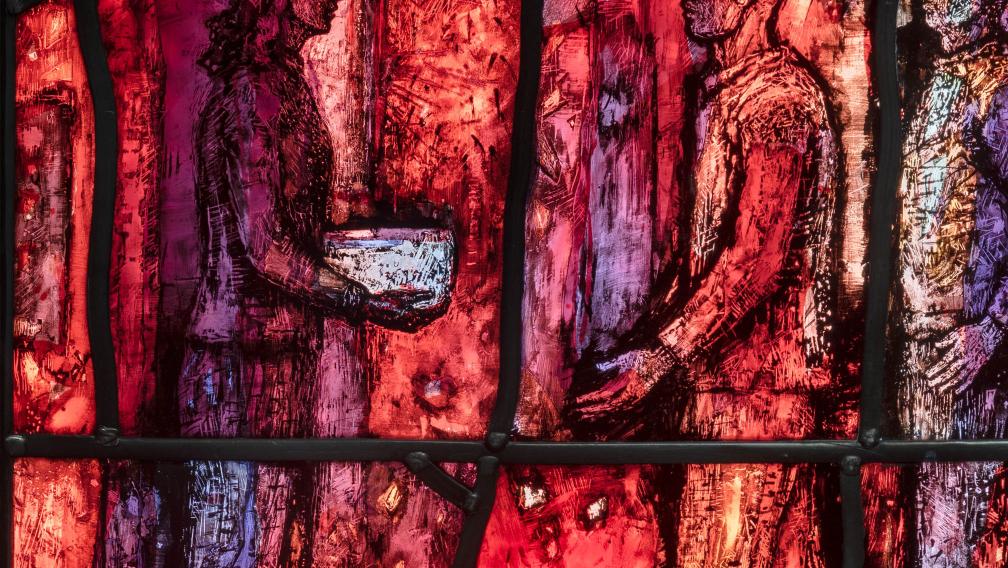Five Ways Into Sunday’s Scripture: Who Jesus Really Is

Six days later, Jesus took with him Peter and James and his brother John and led them up a high mountain, by themselves. And he was transfigured before them, and his face shone like the sun, and his clothes became dazzling white. Suddenly there appeared to them Moses and Elijah, talking with him. Then Peter said to Jesus, “Lord, it is good for us to be here; if you wish, I will make three dwellings here, one for you, one for Moses, and one for Elijah.” While he was still speaking, suddenly a bright cloud overshadowed them, and from the cloud a voice said, “This is my Son, the Beloved; with him I am well pleased; listen to him!” When the disciples heard this, they fell to the ground and were overcome by fear. But Jesus came and touched them, saying, “Get up and do not be afraid.” And when they looked up, they saw no one except Jesus himself alone.
As they were coming down the mountain, Jesus ordered them, “Tell no one about the vision until after the Son of Man has been raised from the dead.”
Matthew 17:1–9
This week’s Gospel reading is Matthew’s account of the luminous transfiguration of Jesus in the presence of his close disciples, Peter, James, and John, on Mount Tabor. No one can see God and remain unchanged.
As on the Baptism of Jesus, here, at the last Sunday of Epiphany, God reveals who Jesus really is: the Divine Son, the Beloved, truly God. Bright light is a symbol of divine presence and the presence of the great figures of Moses and Elijah also attest to Jesus’ divine nature.
The disciples’ glimpse of this reality may have helped them (at least in retrospect — and with the eyes of their hearts) to deal with the abrupt and dramatic changes that would soon follow: Jesus’ turn to Jerusalem, his passion, death, and resurrection.
For modern disciples, as we face into the Lenten season, we hold an image of this mountaintop experience, knowing full well that we, like they, must come down from the mountain and move out into the world proclaiming Good News to the poor, learning how to welcome God’s Beloved amid change, challenge, disappointment, and sacrifice.
—Dr. Kathy Bozzuti-Jones
SOCIAL JUSTICE
“‘Listen to him” was a command which St. Oscar [Romero] amplified continually. The last year he would be alive to celebrate the Feast of the Transfiguration, he told the people, “Our duty is to listen to him … listen to the voice of the Father.” He developed the point to say, “Every year the divine transfigured One comes to challenge this people with the words, ‘What have you done with my mystery?’”
PRAYER
“Dazzling” is the Rev. Jan Richardson’s blessing for Transfiguration Sunday, which contains this poignant line: “This blessing/is made for coming down/the mountain/This blessing/wants to be in motion/to travel with you/as you return/to level ground.”
THEOLOGY
Christine Valters Paintner writes, “The discipline of spiritual practice helps us to cultivate our ability to see below the surface of things, to have a transfigured vision of the world.”
“Are there times when you feel like you see sacred reality better or worse?” asks Amy Frykholm in an essay on Transfiguration Day.
VISUAL ART
Commentary on Augustin Kolawole Olayinka’s “The Transfiguration.”
LITURGY
A celebration of the Transfiguration in a Ukranian Orthodox church.
Coming Soon
This Sunday at 10am, the Discovery community continues an exploration of spiritual friendship as Mirabai Starr, teacher and author of Wild Mercy: Living the Fierce and Tender Wisdom of the Women Mystics, considers mysticism and the relationship between Teresa of Ávila and St. John of the Cross.
How have African Americans throughout history utilized the Apostle Paul and his letters in their writings to protest and resist oppression? On May 5–7, join Dr. Lisa Bowens at Trinity Retreat Center for African American Readings of St. Paul, an opportunity to journey through the centuries by engaging select portions of works by Black authors who lived from the 18th to the 20th century.





